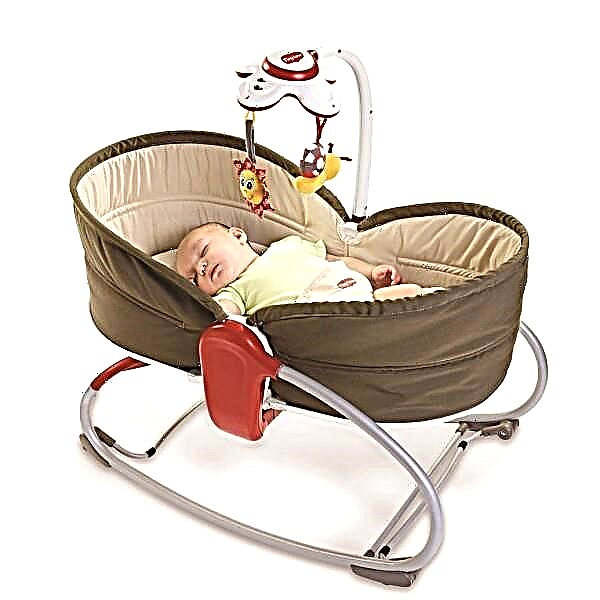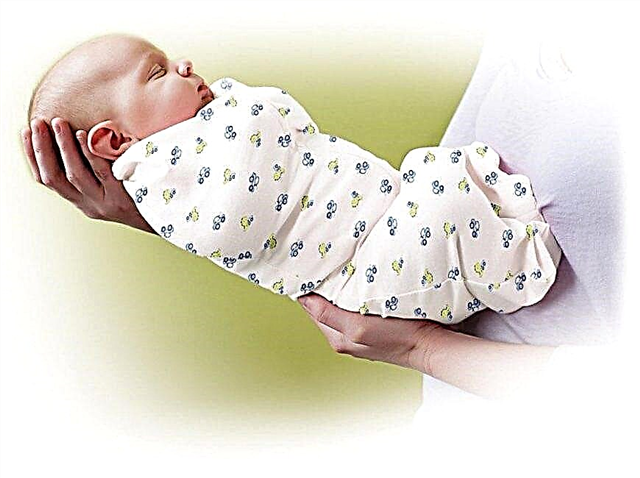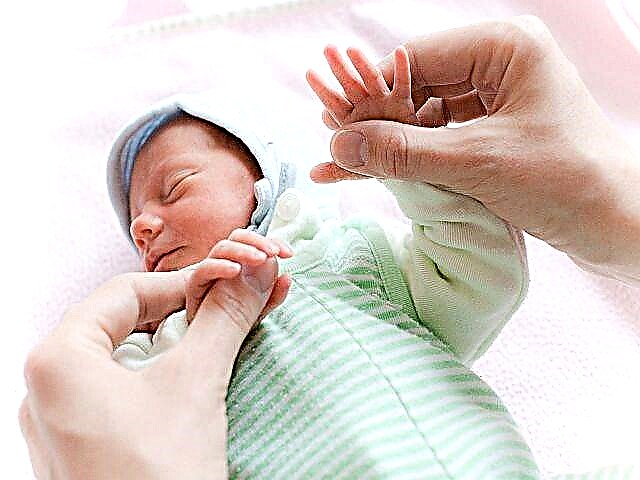Adenoids are enlargements of the pharyngeal tonsil. It is located at the very beginning of the pharynx - in its nose. During a normal examination, the pharynx of a child cannot be seen. To identify adenoids, you need to contact an ENT doctor for special procedures that will help evaluate them.
Parents faced with the diagnosis of adenoids in their child, the first thing that comes to mind is surgery. But don't despair. In cases where there are no absolute indications for surgery (listed below), you can first try to be treated with other conservative methods. This article will discuss how to reduce adenoids in a child without surgery.
Surgical intervention should not be postponed in the following cases:
- if the child cannot fully breathe through the nose;
- poor sleep in a baby due to snoring and breathing problems. Especially if shortness of breath occurs and the worst is short-term apnea, that is, respiratory arrest;
- when the child begins to hear poorly and his middle ear is very often inflamed;
- repeated episodes of inflammation of the paranasal sinuses;
- with the formed so-called "adenoid" face. But it is better, of course, not to bring it to this and do the operation already before irreversible changes in the bones of the skull appear;
- prolonged bleeding from the nasal cavity.
If the above conditions are not yet available, then it is necessary to try to cure the child's adenoids without surgery.
In ancient times, when adenoids appeared, they were necessarily removed. Therefore, grandparents can "advise" you. But as a result of many studies, it has been proven that this should not be done without absolute indications, since the pharyngeal tonsil also has an important function - participation in immunity.
The well-known doctor Komarovsky also recommends starting therapy for hypertrophy of the pharyngeal tonsil with conservative methods.
For the treatment of adenoids in children, drugs are used topically or internally, physiotherapy, as well as folk remedies. You can use all this in combination or separately.
Rinsing the nasal cavity
Local effect on the enlarged pharyngeal tonsil is more effective than taking medications inside. This is achieved by rinsing the nasal cavity with various medicinal solutions (also known as "irrigation therapy"). Using this method, harmful microorganisms and mucous discharge that have settled there are removed from the surface of the mucous membrane of the overgrown tonsil. Usually prescribed as monotherapy for the first degree of adenoids.
How to rinse your nose?
Saline solutions
You can prepare a solution for irrigation of the nasal cavity yourself. The proportions are as follows: 1 glass of water cooled to room temperature and 1 teaspoon of table or sea salt. But the advantage is given to ready-made pharmaceutical preparations. Since the salt concentration in them is selected very precisely, the solution is sterile and always ready for use. These drugs are known to everyone and are represented by a variety of lines:
- "Aqualor",
- "Aquamaris",
- "Physiomer",
- "Marimer",
- Humer,
- "Otrivin More",
- Septo Aqua,
- "Salin",
- Dolphin,
- physiological solution (0.9% sodium chloride solution).

How to flush the nasal cavity correctly?
- The child's head should be turned to the side.
- Insert the tip of the nebulizer into the upper nasal passage (relative to the horizontal position of the head), irrigate the nasal cavity with a solution and suck the mucus with a special aspirator if the child is small. If the crumb is large, then let it blow your nose yourself.
For babies under 2 years old, drugs are used only in the form of drops. Over 2 years old, you can use the spray.
- Repeat the same with the second nasal passage.
- The procedure must be done 3 - 4 times a day, within 7 - 10 days for several courses.
With second-degree adenoids, treatment with other groups of drugs is possible. Before using the following drugs, it is necessary to rinse the nasal cavity with the above method.
Vasoconstrictor drugs
With severe swelling of the ENT tonsils, the doctor prescribes vasoconstrictor drugs. For the smallest, they are produced in the form of drops with a low concentration of the vasoconstrictor component, and for larger children - in the form of sprays and the percentage of the active substance will be higher. These drugs are also known to everyone: "Nazivin", "Nazol", "Xymelin", "Otrivin" and many others.

You should not use this group of drugs frivolously - it should be used strictly according to the doctor's prescription 3-4 times a day for no more than 5, maximum 7 days, since there is a risk of developing addiction to the drug.
Hormonal drugs
It is possible that the doctor will prescribe hormone-based medications, especially with concomitant allergies. More often it is Avamis, Nasonex from 2 years old, Nazarel, Fliksonaze - from 4 years old and Nasobek - from 6 years old.

Antiseptics and antibiotics
In the case of an infection, it is possible to develop inflammation of the enlarged pharyngeal tonsil - adenoiditis. Inflammation can be caused by both viruses and bacteria. Then additional groups of drugs are already used.
Antiseptic
- "Miramistin", "Octenisept", "Chlorhexidine" - sprays into the nasopharynx;
- "Albucid", "Argolife", "Protargol", "Collargol" or "Sialor" - drops in the nose.
Antibiotics in the form of a spray in the nose
- "Isofra";
- Polydex with phenylephrine.

Folk remedies for the treatment of adenoids
With the help of folk remedies, you can also achieve success.
- Instillation of sea buckthorn, tea or eucalyptus tree oils into the nose. They have natural anti-inflammatory, antiseptic, antimicrobial and, to some extent, vasoconstrictor effects. Before use, the bottle with the drug is heated in the hand and instilled into the previously washed nasal passages. Apply 4 - 5 times a day for 10 - 15 days.
- Rinsing the nasal cavity with decoctions of medicinal herbs: mother and stepmother, chamomile, St. John's wort, horsetail or a series, morning and evening, for a week or 10 days. With their help, inflammation of the nasopharynx can be eliminated. Herbs can be collected and dried on their own, but it is better to use a pharmacy ready-made collection.
- Aloe, due to its unique chemical composition, has anti-inflammatory and antimicrobial effects. But most of all, the regenerating effect is appreciated - aloe relieves irritation of the mucous membrane of the nasopharyngeal cavity, which often occurs with adenoids. Instill 2 - 3 drops of juice 3 times a day, lasting from 2 weeks to a year.
Treatment with herbal solutions and decoctions for many parents may be much preferable so as not to burden the child with chemicals. But you need to be careful, as there is a high risk of developing allergic reactions.
- Of course, traditional medicine is not complete without beekeeping products. There are many recipes for using them.
Add 15 drops of 10% propolis tincture and half a teaspoon of baking soda to a glass of boiled cooled water. Gargle 3 times a day for 7 days. The same solution can be used to rinse the nose.
Also, the use of honey inside has a general strengthening effect on the child's body. It will be easier for a baby with good immunity to cope with adenoids.
If the baby is allergic to beekeeping products, the use of the above methods is excluded.
Homeopathy for adenoids
Alternative medicine is also widely used to treat pathological processes of the nasopharynx. It is used in combination with traditional drugs at 1 - 2 degrees of adenoid vegetation.
Thuja oil occupies one of the significant places in the treatment of adenoids in children without surgery. It is rich in healing substances that relieve inflammation and inhibit the further growth of the pharyngeal tonsil. In addition, it has antimicrobial, healing and vasoconstrictor effect. Homeopathic remedies based on thuja oil:
- "Edas - 801" - drops in the nose;
- "Tuya GF" - drops in the nose;
- "Tuya DN" - drops and ointment for laying in the nasal passages;
- "Job - baby" ("Barberry - comp") - granules for oral administration. In addition, it contains the fruits of dried barberry, steep-leaved steep and iodine;
- "Euphorbium compositum" contains a mixture of homeopathic active ingredients. It has anti-inflammatory, anti-allergic, healing and moisturizing properties. Produced in the form of a spray (therefore, it is allowed only from 4 years old);

"Job - baby" and "Euphorbium compositum" contain iodine, therefore drugs are contraindicated in patients with thyroid diseases.
- "Lymphomyosot" is a combined herbal remedy. The official instructions for the drug indicate that its use is possible from the age of 18. But pediatric otorhinolaryngologists often prescribe Lymphomyosot to children due to its high efficiency. It is produced in drops for oral administration, as well as in ampoules with a solution for intramuscular administration.
Although there is an opinion that this group does not have any side effects, it is still worth fearing, since the basis of drugs is herbal ingredients that can cause allergies in children.
Breathing exercises
If a child often suffers from colds and has adenoids, then in addition to the main treatment, it is necessary to start gymnastics for the respiratory tract. Regular exercises for 3 - 4 months help to improve blood flow, increase the tone of smooth muscles in the respiratory organs, eliminate congestion in the paranasal sinuses and eliminate hypoxia, saturating the cells of the body with oxygen.
There are many breathing exercises. One of the most effective is gymnastics according to the Buteyko method. It is easy for both adults and children to do.
- Close the child's right nostril. Ask for a slow deep breath and then exhale with the left nostril. Keep your baby's mouth closed. It is necessary to teach him to breathe only through his nose. Repeat the exercise with the left nostril.
- Close the child's right nostril. Have the child take a deep breath with the left side and hold their breath for a couple of seconds. At this time, you will release the right nostril and press the left nostril. Ask your baby to breathe out slowly.
- Pinch the child's nose completely. Count to ten and clear your nostrils. Ask your baby to take a deep breath in and out 10 times through the nose.
- Do everything the same as in the previous exercise, only inhaling and exhaling is done through the mouth.
- Count to 5 and ask your child to inhale through his nose. Count to 5 again and have the child exhale through their mouth.
Before doing gymnastics, rinse the nasal cavity.
Inhalation with adenoids
By inhaling various drugs, it is possible to delay further growth of the tissue of the pharyngeal tonsil.
- Take a handkerchief or cotton pad, put 2 - 3 drops of essential oil on it and put it in the room where the child is playing for 10 minutes. You can use thuja, fir, eucalyptus or mint oil.
- Fill the bathtub with warm water and put 5 - 7 drops of oil in it and let the baby breathe in vapors for about 10 - 20 minutes.
- Heat sea salt in a skillet and add 3 drops of oil to it. You need to make a quick breath and a slow exhalation for 5 minutes. This type of inhalation is effective for colds, as it has a drying effect.
- In case of severe inflammation to relieve swelling, the doctor may prescribe inhalations with saline, the hormonal drug Pulmicort, the antibiotic Fluimucil - antibiotic IT through a nebulizer.
In case of adenoids, inhalations over hot steam are not recommended, since blood circulation increases and the adenoids continue to increase in size.

Physiotherapy
It includes many effective methods that have a beneficial effect on the enlarged pharyngeal tonsil, and is used as an adjunct to the main drug therapy.
Electrophoresis - the use of electrical impulses to deliver drugs into the pharyngeal tonsil, such as potassium iodide, silver nitrate, novocaine, prednisolone.
Ultraviolet radiation is often used to treat adenoids in children. Its main effects are: drying of the nasal mucosa, elimination of edema, destruction of pathogenic microbes. Irradiation is carried out intranasally.
Ultra-high-frequency - therapy is carried out externally. Special plates are applied to the lateral surfaces of the neck and at the angle of the lower jaw. The procedure inhibits the further development of inflammation in the pharyngeal tonsils, relieves pain, and helps to strengthen local immunity.
Laser therapy is the most effective method of physiotherapy. Adenoids are treated with a helium - neon laser using a light guide inserted into the nasal cavity. The procedure itself is painless, but requires complete immobility of the patient. Laser therapy has a biostimulating effect on the adenoids.

Conclusions
There are many different ways to reduce enlarged tonsils without surgery. But not all methods may work for your child. Most often, positive results can be achieved with a timely diagnosis and during the started complex treatment. Grade 1 and 2 adenoids are easy to treat. With 3 degrees of vegetation, you will most likely need to remove the tonsil. In any case, a doctor should be involved in diagnostics and treatment. Only a specialist will select an effective and safe therapy that will help your baby.



